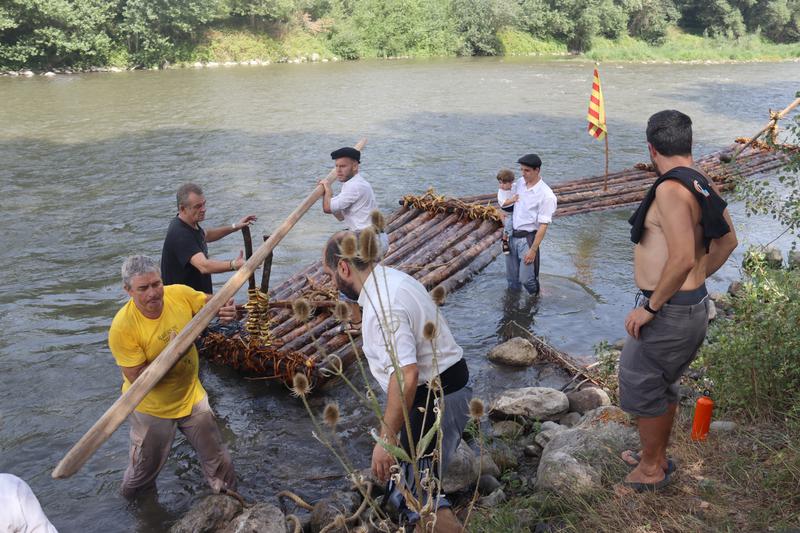Rural Catalan timber rafters awarded UNESCO intangible cultural heritage status
Joint application from Austria, Czechia, Germany, Latvia, Poland and Spain aimed at preserving ancient river transport tradition

The timber rafters of Catalonia, along with some other communities across Europe, have been awarded UNESCO intangible cultural heritage status.
The decision was made at the 17th session of the Committee for the Safeguarding of Intangible Cultural Heritage taking place in Rabat, Morocco from November 28 to December 3.
A joint application was put forward by Austria, Czechia, Germany, Latvia, Poland and Spain, involving forty local timber rafting associations.
Their aim with the application was to preserve the centuries-old method of river transport and pay tribute to all the people down through the years who dedicated their lives to it.
In Catalonia, the raiers (timber rafters in Catalan) in the towns of La Pobla de Segur and Pont de Claverol – on the Noguera Pallaresa river – and Coll de Nargó – on the Segre – believe that achieving this prestigious recognition will help preserve the tradition.
News of the international recognition led to some rafters taking to the streets to celebrate. Representatives from the farmers' associations and neighbors in La Pobla de Segur and Coll de Nargó toasted the news with cava and ratafia.
Rafters' first thoughts were for all those who came before them who risked their lives as part of this unique form of transport, while they also wanted to honor those who recovered the profession as a tribute.
The challenge now for both La Pobla de Segur and Pont de Claverol, the rafters acknowledge, is to maintain the tradition alive and pass it on to the next generations.
UNESCO pitch
Timber rafting, according to the application submitted to UNESCO, involves traditional knowledge and skills on the construction and navigation of rafts on inland waters. The practice includes constructing wooden rafts, transporting logs, and knowledge of nature.
Cultivated in local communities living in villages and towns located near rivers, streams, lakes, or shores, it originated in the Middle Ages when rafts were used to transport logs, firewood, goods, and people using natural water flows.
Although there are no set rules for the selection, preparation and binding of the timber, or for navigation methods, all rafters share a similar lifestyle, specific vocabulary, and habits passed down from generation to generation over the centuries.
Transporting goods by river using wooden rafts was, for centuries, a way of life, but by the early 20th century it had all but disappeared in many parts of the world as dams were built and trucks began to appear.
Safeguarding tradition
As part of the submission to UNESCO, organizations in each area laid out their plans for safeguarding the tradition.
In Catalonia, these include digitizing historical documentation, disseminating it on the internet and opening a small, specialized library at the Espai Raier in La Pobla de Segur.
Yearly rafting celebrations, including workshops, will continue to be organized.
The University of Lleida's Chair of Education and Intangible Heritage of the Pyrenees will offer advice in various fields of research on intangible heritage.
Finally, the Catalan culture ministry will maintain subsidies for rafting events, publications and travel to events abroad, as well as supporting ethnological research on timber rafting.
To learn more about Catalonia's UNESCO World Heritage Sites, listen to the podcast below: UNESCO World Heritage Sites – cultural and architectural gems of Catalonia.